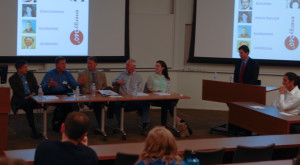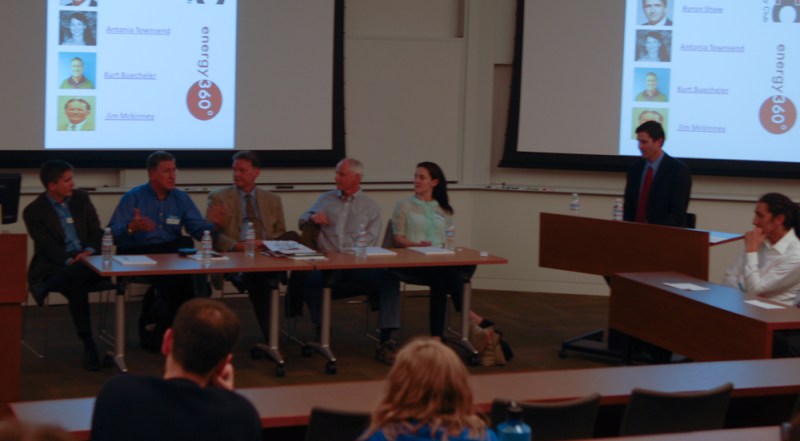
With the automotive industry on the verge of major changes due to rising oil prices and increasing emissions restrictions, the Stanford Energy Club’s Energy 360° program brought together experts and executives Monday evening for a holistic discussion about the industry’s future.
“We do a deep dive into energy topics,” said Karim Farhat, president of the Stanford Energy Club.
Energy 360° is a quarterly interdisciplinary program that tries to address all aspects of predominant energy issues, including the technology, policy and business perspectives. The panel featured representatives from longstanding automakers, new entries in the market, new software service providers and legislators.
Panelist Jim McKinney from the California Energy Commission set the scene for the discussion’s importance with statistics about California transportation. According to McKinney, California boasts 26.2 million cars and just fewer than one million trucks on the road. In a single year, the state uses 18.8 billion gallons of gasoline and diesel fuel.
The main topic of discussion at the panel was the question of electric vehicles entering a market previously dominated by internal combustion engine vehicles for over 100 years. Panelist Marc Tarpenning, co-founder of one of the biggest challengers to the major automakers, Tesla Motors, described how battery technology is just reaching the point at which electric cars can be practical upmarket, but the technology is on pace to drop in price.
“Cell phones used to be 10 grand apiece,” Tarpenning said. “Each model of Tesla has been cheaper than the previous one, and it’s going to continue like that for a long time.”
Byron Shaw, managing director at General Motors’ Advanced Technology Office, sat on the panel to discuss GM’s outlook on the future of cars and trucks.
“We look out toward 2030 when we start planning our products,” Shaw said. He noted that some demographic projections indicate most of the world living in cities much larger than any currently in existence by 2030, and such dense populations may change transportation completely.
For now, however, Shaw emphasized that GM is staying with consumer demands.
“The internal combustion engine is not going away anytime soon,” he said. “What you’ll see is more and more miles being replaced … with battery or fuel cells as the technology develops.”
Other panelists commented on new transportation models and software services.
Shelby Clark, founder of RelayRides, discussed his company’s philosophy. RelayRides allows car owners to rent their cars to others for personal profit.
Clark said that much of the environmental impact from cars comes from the manufacturing and resources needed to make the vehicle. Car sharing programs such as RelayRides promote the possibility of having less cars on the road by allowing people to use cars that would otherwise be sitting idly in parking lots.
“The challenge we face is this American love of our cars,” Clark said. “Maybe we can all start thinking about the fact that you don’t have to own your car.
“You don’t get upset about not owning your train,” he added.
Kurt Buecheler, vice president and general manager of Streetline, a company developing sensor-based systems to optimize parking for cities, offered a different perspective on the panel. Streetline presents data in a mobile phone application that points users to available parking spots.
The panelists were generally in agreement that legislation and regulation will need to evolve along with the automotive industry to address future problems. Regulating parking in the face of massive overpopulation and dealing with increased load on the electric grid from the charging of electric vehicle batteries may pose major obstacles in the near future.
Shaw noted, however, the difficulties that governmental actions pose for automakers.
“It takes us about seven years to design a vehicle from conception to seeing that car on the street,” he said, referring to changes over the last decade in Environmental Protection Agency and Corporate Average Fuel Economy regulations.
Tarpenning recognized Japan’s success with setting a price floor on gasoline after the oil scare of the 1970s. The price floor forced Japanese automakers such as Toyota and Honda to engineer more efficient cars to meet consumer demand.
In the start-up realm, Buecheler encouraged entrepreneurs to focus on reinventing industries, calling for “medicine” for major problems in the world instead of “vitamins” to slightly enhance life.
“Is something transformational? Did it really make a difference?” he asked.
